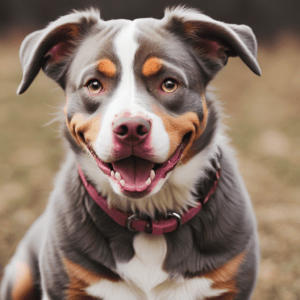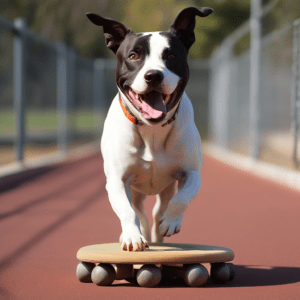Best running dogs when it comes to the term “best running dogs,” there’s a common misconception that only certain breeds are suitable for hitting the pavement with their human counterparts. However, the truth is that any dog, regardless of breed, can become a great running companion with proper training and care.
In this blog, we’re going to explore the world of running dogs, debunking myths and shedding light on the diversity of breeds that can excel in this activity.
Choosing the Perfect Running Companion
So, you’ve decided to embark on the adventure of running with your furry friend by your side. The first step in this journey is choosing the perfect running companion.
While some may believe that only high-energy breeds like Border Collies or German Shepherds make good running
partners, the reality is that there’s a wide range of breeds suited to this activity. From the speedy Greyhound to the sturdy Labrador Retriever, the key is to find a dog that matches your pace and fitness level.
When considering a breed for running, it’s essential to look beyond stereotypes and consider individual traits and temperament. While some breeds may naturally gravitate towards running, others may require more training and patience. Factors such as size, age, and health should also be taken into account when selecting a running companion.
For example, smaller breeds like Jack Russell Terriers may have boundless energy but may not be able to keep up with long distances, while larger breeds like the Siberian Husky may thrive in cooler climates but struggle in hot weather.
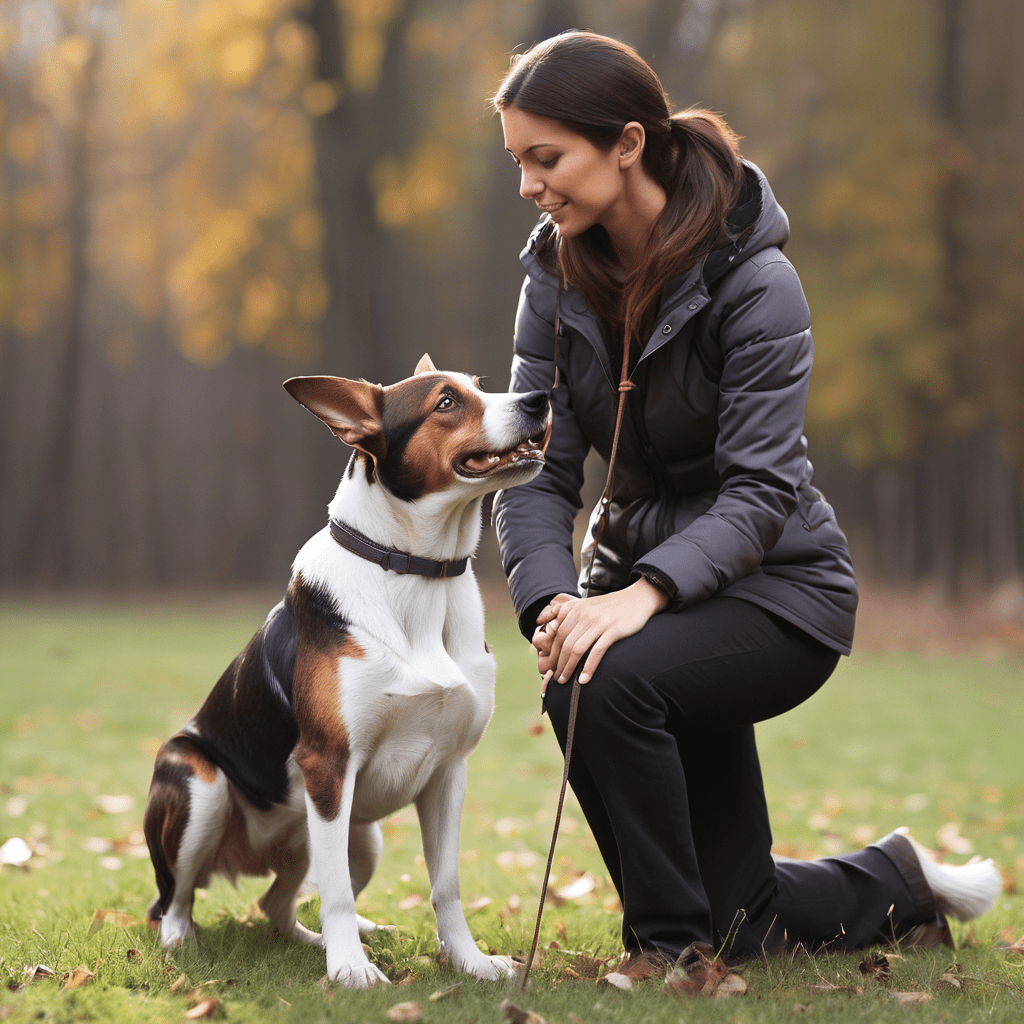
Training Tips for Running with Your Dog
Now that you’ve found the perfect running companion, it’s time to ensure both you and your furry friend are ready to hit the pavement together.
Training your dog for running involves more than just leashing up and heading out the door—it requires patience, consistency, and proper preparation to ensure a safe and enjoyable experience for both of you. Here are some training tips to help you and your canine companion become a dynamic running duo:
Start Slow and Gradually Increase Intensity
Just like humans, dogs need time to build up their stamina and endurance for running. Start with short, slow-paced runs and gradually increase the distance and intensity over time.
This gradual approach will allow your dog’s muscles to adapt to the demands of running and help prevent injury. Pay attention to your dog’s cues and adjust your pace accordingly—remember, it’s not a race, so take it slow and enjoy the journey together.
Focus on Consistency and Routine
Consistency is key when it comes to training your dog for running. Stick to a regular running schedule and make it a part of your daily routine. Dogs thrive on structure and predictability, so establishing a consistent running routine will help them feel more comfortable and confident during runs.
Whether you prefer morning jogs or evening strolls, find a time that works for both you and your dog and stick to it.
Practice Obedience Training
Obedience training is essential for running safely with your dog. Teach your dog basic commands such as “heel,” “stay,” and “come” to ensure they can follow your lead and respond to cues while on the run. Use positive reinforcement techniques such as treats and praise to reward good behavior and reinforce commands.
Consistent training will help build trust and communication between you and your dog, making for a more enjoyable running experience for both of you.

Monitor Your Dog’s Health and Well-being
Before starting a running regimen with your dog, it’s important to ensure they are in good health. Schedule a check-up with your veterinarian to assess your dog’s overall fitness level and discuss any potential health concerns.
Pay attention to signs of fatigue, overheating, or discomfort during runs, and be prepared to adjust your pace or take breaks as needed. Remember to bring along water and snacks for both you and your dog to stay hydrated and fueled during longer runs.
Listen to Your Dog’s Cues and Respect Their Limits
Every dog is unique, and it’s important to listen to your dog’s cues and respect their individual limits. Pay attention to signs of fatigue, overheating, or discomfort, and be prepared to adjust your pace or cut your run short if necessary.
Remember that running should be a fun and enjoyable activity for both you and your dog, so don’t push them beyond their comfort zone.
Be patient and supportive, and celebrate small victories along the way as you and your furry friend progress together.
Gear Essentials for Running with Dogs
As you and your furry friend prepare to hit the trails together, it’s essential to have the right gear to ensure a safe and enjoyable running experience.
From leashes to hydration packs, the right equipment can make all the difference in keeping you and your dog comfortable and secure on your runs. Here are some gear essentials for running with dogs:
Leash and Harness
A sturdy leash and harness are essential for keeping your dog safe and secure during runs. Opt for a hands-free leash that attaches around your waist, allowing you to maintain better control and balance while running.
Look for a harness that fits comfortably and securely on your dog, providing support and preventing chafing or rubbing. Reflective or brightly colored leashes and harnesses are ideal for increased visibility, especially when running in low-light conditions.

Collapsible Water Bowl and Hydration Pack
Staying hydrated is crucial for both you and your dog during runs, especially on hot days or long distances. Invest in a collapsible water bowl and hydration pack designed specifically for dogs, allowing you to easily provide water and keep your furry friend hydrated on the go.
Look for a lightweight, portable hydration pack that fits comfortably on your dog’s back and allows for easy access to water while running. Remember to take frequent water breaks and monitor your dog’s hydration levels to prevent dehydration and overheating.
Paw Protection
Protecting your dog’s paws from rough terrain, hot pavement, and sharp objects is essential for a comfortable and injury-free run. Consider investing in dog booties or paw wax to provide added protection and support for your dog’s paws. Look for booties with durable, non-slip soles and breathable materials that allow for natural movement and airflow.
Paw wax can help moisturize and protect your dog’s paw pads from dryness and cracking, especially during winter months or in harsh weather conditions.
Safety Lights and Reflective Gear
Increasing your visibility during runs is essential for safety, especially when running in low-light conditions or busy areas. Invest in safety lights and reflective gear for both you and your dog to improve visibility and alert others to your presence.
Attach safety lights to your dog’s collar or harness and wear reflective clothing or accessories to ensure you’re visible to motorists, cyclists, and pedestrians. Bright colors and reflective materials can help you stand out and reduce the risk of accidents or collisions while running.
First Aid Kit
Accidents can happen, even on the most routine runs, so it’s essential to be prepared for emergencies. Pack a lightweight first aid kit with essential supplies such as bandages, antiseptic wipes, tweezers, and emergency contact information.
Familiarize yourself with basic first aid techniques for treating common injuries such as cuts, scrapes, and sprains, and know when to seek veterinary care for more serious injuries.
Having a first aid kit on hand can give you peace of mind knowing that you’re prepared to handle any unexpected situations that may arise during your runs.
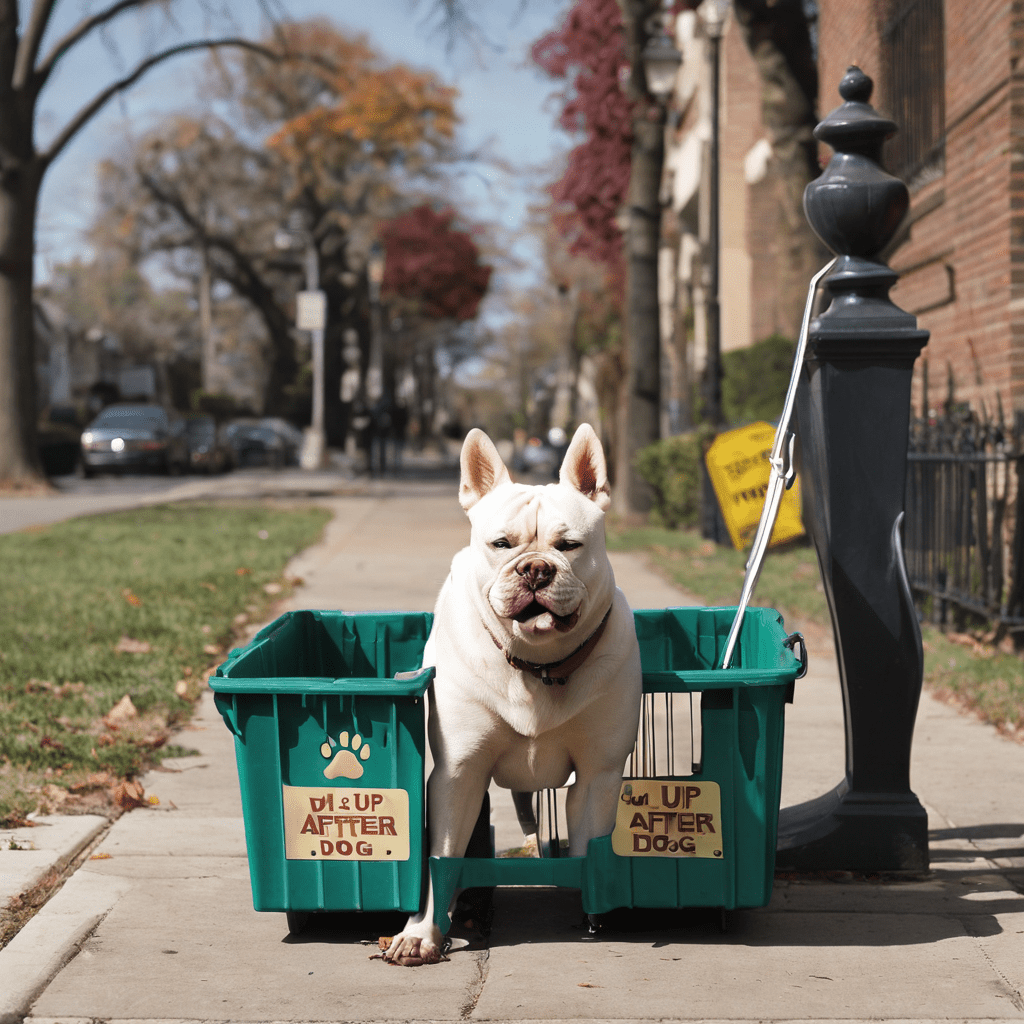
Health and Nutrition for Active Dogs
Ensuring your canine companion’s health and nutrition is essential for their well-being and performance as your running partner. Just like humans, dogs require a balanced diet and proper care to maintain their energy levels and stamina during runs. Here are some tips for keeping your active dog healthy and nourished:
Balanced Diet
A balanced diet is crucial for supporting your dog’s overall health and energy levels, especially when engaging in regular physical activity like running. Choose a high-quality dog food that is rich in protein and nutrients, and tailored to your dog’s age, size, and activity level.
Choose products where real meat is the main component and stay away from artificial additives and fillers.Consider consulting with your veterinarian to determine the best diet plan for your dog’s specific needs and dietary requirements.
Adequate Hydration
Staying hydrated is essential for both you and your dog during runs, especially in hot weather or during intense exercise. Make sure to bring along plenty of water for both you and your furry friend, and take frequent breaks to allow them to drink and rest.
Consider investing in a portable water bottle or hydration pack designed specifically for dogs, allowing you to easily provide water on the go. Monitor your dog’s hydration levels and be attentive to signs of dehydration, such as excessive panting, lethargy, or dry gums.
Regular Exercise and Physical Activity
In addition to running, incorporating regular exercise and physical activity into your dog’s routine is essential for maintaining their health and fitness. Engage in activities such as walking, hiking, swimming, and playing fetch to keep your dog active and stimulated. Consider varying your exercise routine to prevent boredom and keep your dog mentally and physically challenged.
Regular exercise not only helps to strengthen your dog’s muscles and joints but also provides mental stimulation and
helps to prevent behavioral issues such as boredom and anxiety.

Joint Health and Mobility
Maintaining joint health and mobility is especially important for active dogs, as running and physical activity can put additional stress on their joints and muscles.
Consider adding supplements such as glucosamine and chondroitin to your dog’s diet to support joint health and reduce the risk of arthritis and other age-related conditions
Additionally, incorporate activities such as stretching and gentle massage into your dog’s routine to help improve flexibility and mobility.
Be attentive to signs of joint pain or discomfort, such as limping or reluctance to exercise, and consult with your veterinarian if you have concerns about your dog’s joint health.
Regular Veterinary Check-ups
Regular veterinary check-ups are essential for monitoring your dog’s overall health and well-being, especially as they age or engage in regular physical activity like running.
Schedule annual wellness exams with your veterinarian to assess your dog’s health, discuss any concerns or changes in
behavior, and ensure they are up-to-date on vaccinations and preventive care. Be proactive in addressing any health
issues or concerns, and follow your veterinarian’s recommendations for preventive care and management of chronic conditions.
By staying proactive and attentive to your dog’s health, you can help them live a long, happy, and active life as your running companion.
Running Safety and Etiquette
While running with your dog can be a rewarding and enjoyable experience, it’s essential to prioritize safety and practice
good etiquette to ensure the well-being of both you and your furry friend. Whether you’re hitting the trails or running
through your neighborhood, here are some tips for staying safe and courteous while running with your dog:
Leash Up
Keeping your dog on a leash is not only a matter of safety but also a sign of respect for other trail users and wildlife.
Even if your dog is well-trained and obedient, it’s essential to leash them up during runs to prevent them from
wandering off, chasing wildlife, or getting into conflicts with other dogs.
Invest in a sturdy leash and harness that provides control and security, and keep your dog on a short leash to maintain
better control and prevent tangling.

Be Aware of Your Surroundings
Stay vigilant and aware of your surroundings while running with your dog, especially when running in busy or crowded areas. Keep an eye out for potential hazards such as uneven terrain, obstacles, or wildlife, and be prepared to adjust
your route or pace accordingly. Pay attention to signs indicating leash laws or trail regulations, and respect the rules
and guidelines established for the area you’re running in.
Yield to Others
Practice good trail etiquette and yield to other trail users when necessary. When passing pedestrians, cyclists, or other runners, announce your presence and give them plenty of space to pass safely. If encountering equestrians or wildlife,
give them even more space and step off the trail if necessary to allow them to pass without stress or interference. Remember to always yield the right-of-way to others and be courteous and respectful of their presence on the trail.
Pick Up After Your Dog
Be a responsible pet owner and always clean up after your dog during runs. Bring along waste bags and promptly pick up any messes your dog may leave behind. Dispose of waste properly in designated trash bins or carry it with you until you can dispose of it properly. Not only is leaving waste behind unsightly and unsanitary, but it can also pose
environmental hazards and negatively impact other trail users and wildlife.
Be Prepared for Emergencies
Accidents can happen, even on routine runs, so it’s essential to be prepared for emergencies. Pack a basic first aid kit
with essential supplies such as bandages, antiseptic wipes, and tweezers, and familiarize yourself with basic first aid
techniques for treating common injuries. Additionally, carry a charged cell phone and emergency contact information with you in case you need to call for help.
Being prepared for emergencies can give you peace of mind knowing that you’re equipped to handle any unexpected
situations that may arise during your runs.
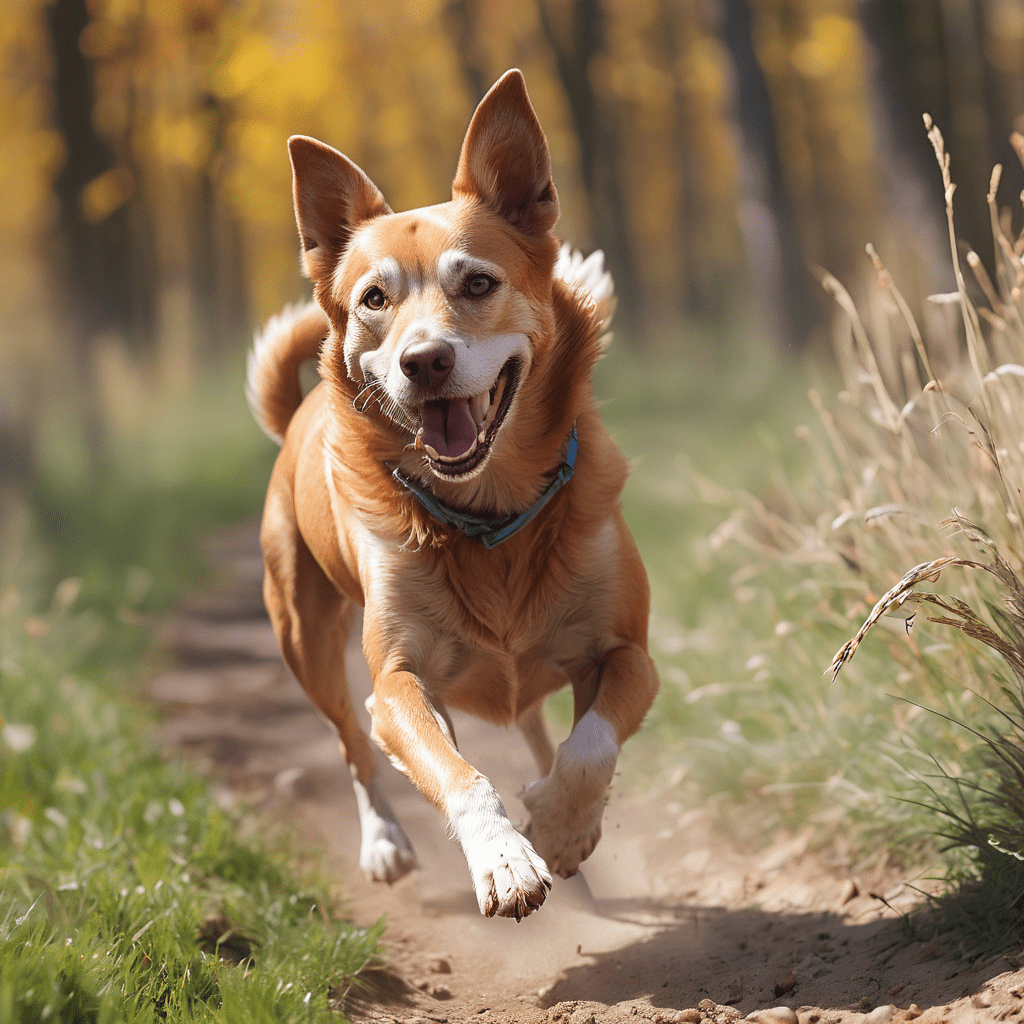
Conclusion
Embrace the Journey with Your Running Companion
As you embark on this journey of running with your dog, remember that it’s not just about reaching the finish line—it’s
about enjoying the journey together. Running with your furry friend can be a rewarding and fulfilling experience, filled with laughter, companionship, and shared adventures.
Whether you’re exploring new trails, tackling challenging terrain, or simply enjoying a leisurely jog around the
neighborhood, cherish each moment spent with your canine companion by your side.
Embrace the Bond
Running with your dog is more than just a physical activity—it’s an opportunity to strengthen the bond between you and
your furry friend. Cherish the moments spent together on the trail, celebrating victories, overcoming challenges, and experiencing new adventures as a team.
Your dog’s unwavering loyalty, enthusiasm, and companionship will inspire you to push beyond your limits and
embrace the joy of living in the moment.
Celebrate Progress
Every step taken with your dog is a step forward, regardless of pace or distance. Celebrate the progress you’ve made
together, whether it’s conquering a challenging trail, achieving a personal best, or simply enjoying the beauty of nature surrounding you.
Running with your dog is not about competing or comparing yourself to others—it’s about celebrating the unique
journey you share with your furry friend and the memories you create along the way.
Prioritize Well-being
Above all, prioritize the well-being and happiness of your dog throughout your running journey. Listen to their cues, respect their limits, and always put their safety and comfort first. Keep in mind that each dog is different, so that suits
one might not suit another.Be attentive to your dog’s needs and preferences, and adjust your running routine
accordingly to make sure you both have a good and enjoyable experience.
Gratitude and Reflection
As you lace up your sneakers and leash up your dog for your next run, take a moment to reflect on the gratitude you feel
for having such a loyal and devoted companion by your side.
Whether you’re running to clear your mind, relieve stress, or simply enjoy the outdoors, cherish the moments shared with
your furry friend and treasure the special bond you share.






